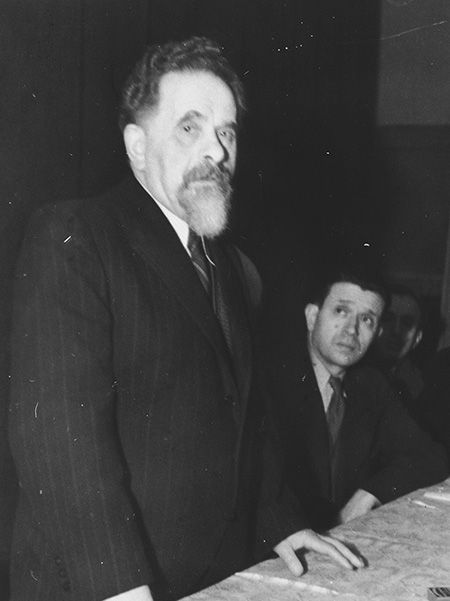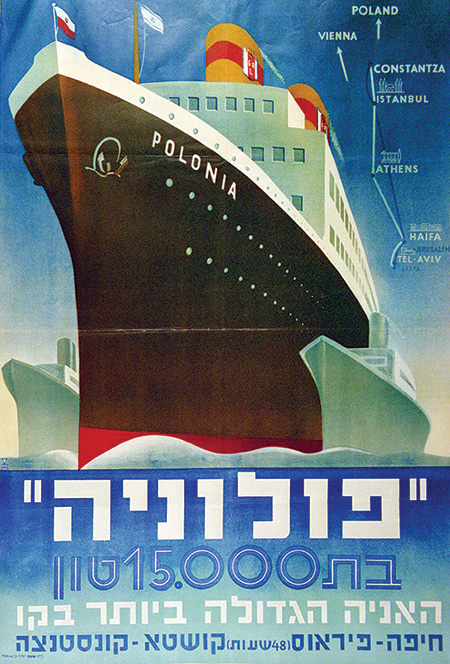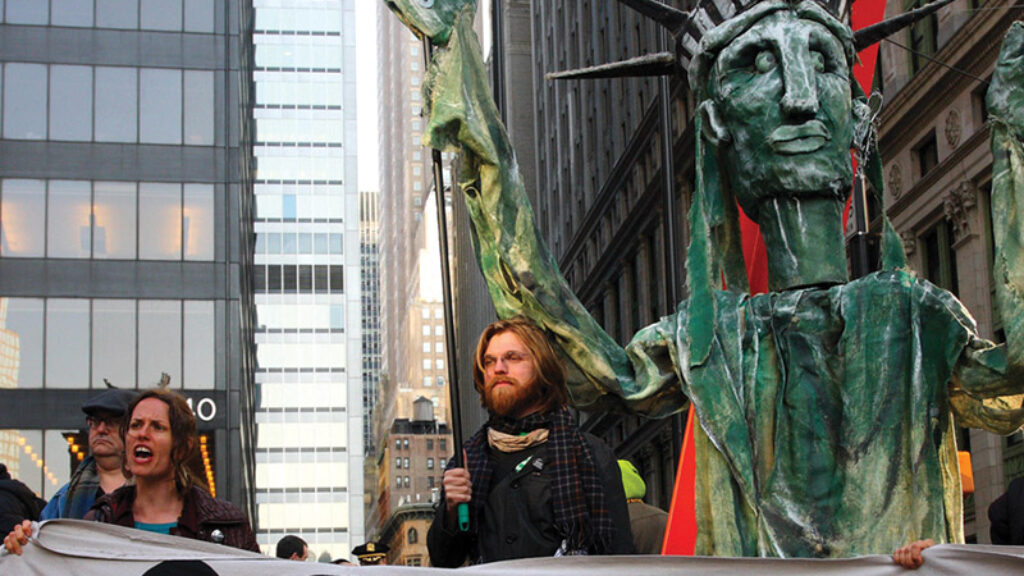Confusion and Illusions: 1939
In March of 1936, not long after the Nuremberg Laws went into effect in the Third Reich, the Yiddish writer Sholem Asch could still declare that “the core of the Jewish situation is not in Germany but in Poland,” and one cannot fault him for that. There were, after all, more than five times as many Jews in Poland as in Germany, and their circumstances were both dire and deteriorating. A million of them lived in desperate poverty, and all of them had to cope with mounting anti-Semitism. Their own government made no secret of its desire to see them leave the country, but there was nowhere—not even Palestine, which could take only a small proportion of them—for them to go.
In their wide-ranging, multilayered, and riveting book The Road to September 1939: Polish Jews, Zionists, and the Yishuv on the Eve of World War II, Jehuda Reinharz and Yaacov Shavit focus on the efforts of the leaders of a diverse and disunited Jewish people in Europe, the United States, and Palestine to cope with this crisis in the years leading up to World War II. The authors clearly demonstrate how difficult it was for these leaders to decipher the overall geopolitical situation and its implications for the Jews of Poland as well as the rest of Europe. They also show how not only those who stood at the head of institutional hierarchies but rank-and-file political activists, sharp-eyed writers, poets, and journalists, as well as many other people clung to what turned out to be illusions about their future.
The backdrop against which the Jews had to determine how to act was bleak. Any one of the challenges they faced would have been daunting in and of itself: Hitler’s rise to power and his destructive policies; Poland’s decline after the death of Piłsudski in 1935 into “a kind of Polish Hitlerism,” as contemporaries put it; the democracies’ retreat in the face of Fascist pressure in Europe and its worldwide reverberations; the Great Arab Rebellion in Palestine (1936–1939) that aroused fierce Muslim animosity toward Zionism from Morocco to India; the ensuing British curtailment of immigration to Palestine, the flood of Jewish refugees toward countries where they were unwelcome; the failure of the international conference at Évian in July 1938 even to begin to address the refugee problem; America’s isolationism; and, finally, the Molotov-Ribbentrop Pact on the eve of war. The combination of these circumstances was insurmountable.

Reinharz, professor emeritus of Jewish history at Brandeis University and the former president of that institution, and Shavit, professor emeritus of Jewish history at Tel Aviv University, describe a collective descent into unknown zones of confusion and uncertainty intertwined with a yearning to continue with life as usual. Leaders traveled as they always had to the famous spas of Europe but then added international conferences where they deliberated earnestly about the worsening situation across the continent to their itineraries. Palestinian Jews sought to escape the suffocating heat of Tel Aviv by taking summer vacations in Poland—even in 1939, despite the worrying signs of an impending conflagration. Jewish and Zionist organizations’ efforts to deal with a fluid and threatening situation yielded plans that proved in the course of time to be devoid of any basis in reality and entirely illusory.
Contemporary Jewish leaders could, of course, see their plight only in the light of past experience. The overall improvement in the status and circumstances of the Jews since the end of the 18th century had habituated them to the idea that Hitler represented only a bump in the road and that things would once again get better. Living through the “zigzags” of Nazi policy, they couldn’t see it, as we can, as a systematic escalation that would culminate in total warfare against the Jews. Even after fighting had broken out in 1939, there were still good and sensible people who did not grasp that the “phony war” would eventually turn into World War II, the most devastating war of all.
The Jewish leaders’ analyses of the general situation may have been inadequate, but they certainly knew that they faced severe problems and strove to solve them. Yet given the failures on the larger scene of world leaders, who had political experience, military intelligence, and economic resources at their disposal that the Jews so woefully lacked, how indeed could one have expected the Jews’ leaders to perform any better in the 1930s? Reinharz and Shavit show how a long list of them from a variety of camps and organizations analyzed and evaluated the disconcerting developments in Europe. They let us hear Chaim Weizmann, for instance, the head of the World Zionist Organization, tell the Peel Commission investigating the troubles in Palestine in 1936 of “millions of Jews in Europe who were turning into ‘human manure’ and of the six million Jews suffering distress in Eastern Europe.” But they also show us how powerless he and other Zionist leaders in Palestine and America were to help most of those people.
Similarly unsuccessful were the forgotten leaders of the Bund that was founded in Poland in 1920, like Henryk Erlich, who never ceased to believe that it was their duty to fight for equal civil rights for Polish Jewry, something they didn’t really expect to see without an alteration of the regime, even as they failed to discourage—and sometimes even assisted—emigration from the country. Erlich simply couldn’t forgive Yitzhak Gruenbaum, the Polish Zionist leader who had left for Palestine in 1933, for saying that “it is better to get shot in the head in Palestine than to get stabbed by a knife on the streets of Warsaw.” Last but not least, there were the heads of the ultra-Orthodox Agudath Israel, who saw in Poland a “home” that they had inhabited for hundreds of years and who regarded every Zionist action as an impermissible defiance of God.
At the center of the “evacuation plan” proposed by the Polish Revisionist leader Yochanan Bader in 1938, under the direction and in the spirit of Jabotinsky, stood the idea of the emigration of 750,000 Jews from Poland to Palestine over the course of 10 years—something far short of an emergency program for the rescue of the many millions of Jews who stood in immediate danger. Bader was not alone in believing that the Jews still had time at their disposal. Even Jabotinsky, today renowned for his dark prescience, could write in March 1939 that “[t]here will be no war; the German insolence will soon subside; Italy will make friends with the British and the Arabs, together with their kings, will lose even the little bit of market value they were supposed to have possessed until now.” As late as August 1939, he was still convinced that war was far off, and even on September 1, after Hitler’s troops had already crossed over onto Polish soil, he wrote that “it is still not possible to know whether there will be a general war.”

At the same moment, the delegates at the 21st Zionist Congress who assembled in Geneva from August 16 to 25, 1939, in the shadow of the Molotov-Ribbentrop Pact, thought that the greatest menace wasn’t Hitler but Great Britain and the main task was fighting a policy that threatened to strangle the Yishuv. Responding to the British issuance three months earlier of the White Paper that had severely curtailed Jewish immigration into Palestine, David Ben-Gurion declared that the Jews of Europe had no choice but to break through Palestine’s gates: “Only with warships and machine guns can England . . . block the way to the homeland.” And, indeed, Great Britain’s warships and sailors, planes and pilots, and intelligence officials strove to stop illegal immigrants in their ports of departure or, failing that, to capture the boats that tried to break through the blockade they had placed on Palestine. Reinharz and Shavit describe the travails of thousands of refugees who made their way out of Europe but found no ready haven elsewhere. Even when they succeeded against all odds in landing in Palestine, “the number of illegal immigrants who were caught was deducted from the official quotas.”
Reinharz and Shavit describe the confusion and illusions not only of statesmen and activists but of writers and poets in Europe and beyond. They note what Nahum Sokolow regarded as “the delusional picture painted by the poet Uri Zvi Greenberg,” who wrote that “Polish Jewry, sad and worried for its daily bread, is not marked by degeneration. It is marked by the sign of royalty, if in Jewish cities and towns can rise (today!) such a popular movement as ‘Brit Hahayal’ [an association of Jewish ex-soldiers in the Polish army], evoking a longing for heroism like that of the ancient conquerors of Canaan.” Watching Betar members march through the streets of Warsaw, Greenberg could exclaim: “The Jordan Guard has risen on the banks of the Vistula; the Hebraic battalion which will grow from tens of thousands to hundreds of thousands strong.”
Reinharz and Shavit have looked well beyond the still famous as well as the half-forgotten political and cultural figures that populate their narrative to draw on the recollections of a large number of rank-and-file Jews caught up in the unpredictable flow of events. They tell the story, for instance, of Sarah Reitberger (Blaustein) and her mother, whose British Palestinian passports enabled them to obtain permits to exit Poland and railroad tickets to Trieste after the German invasion.
Two German soldiers sat in the train car with them. They gave Sarah a picture: a bird that they cut out from the pack of the cigarettes they were smoking. The mother and daughter sailed to Tel Aviv on the ship Galilea on November 5 with another 550 immigrants and returning residents; the ship was torpedoed on its way back to Europe and all its crew drowned. When they got to Tel Aviv there was a big crowd of people at the port trying to attract the returnees’ attention, waving photographs of family members who had remained in Poland.
Such stories, the authors well understand, require no embellishment.
Reinharz and Shavit’s powerful narrative revolves between far-reaching reflections on the overall situation of the Jews on the eve of World War II and precise and illuminating investigations of local developments and individual histories. It rests on a broad and variegated body of scholarly literature and on a Rankean appreciation of the importance of archival documents of all sorts. The authors have made extensive use of the records of governmental institutions in different countries, international committees dealing with Jewish matters and issues pertaining to Palestine and other places, and Jewish organizations in Palestine and throughout the world, as well as letters, personal diaries, memoirs, contemporary newspapers, poetry, and literature. All of these sources serve their goal of presenting, insofar as it is possible, a picture of “what actually happened.” Their book is a refreshing reminder of what can be achieved through the painstaking legwork that is now all too often dismissed as “old-fashioned.”
This book paints a picture of a world in which politicians as well as cultural figures failed to figure out exactly what was happening all around them. Neither the former, whose attention was focused on the real world, whose task it is to choose the possible over the impossible, nor the latter, who dwelt in the realm of the impossible, whose eyes are focused on what is beyond reach, could succeed, despite their best efforts, in reading the tea leaves and breaking out of their powerless positions. Reinharz and Shavit open their book with a heart-rending tale from the September 4, 1939, issue of a Hebrew children’s newspaper of some migratory birds that had had their wings plucked and were therefore unable to fly but were being lovingly and sensitively cared for by zookeepers in Tel Aviv. They conclude the book’s preface with the following sentence: “Only the migrating birds could leave Europe as if there were no borders in the world as a war down on earth unfolded like none before it.” Indeed, sadly enough, only birds could then fly across borders, not Jews. And even those Jews who strove to obtain a bird’s-eye view of what was taking place in Europe in 1939 could not really see where the continent was headed.
Suggested Reading

Bookstore or Beis Medresh
How I learned to stop worrying and love to browse.
High Threshold
Visitors to the Hazon Ish's house would sometimes enter through the window; the venerable sage occasionally left home the same way. “A window,” the Hazon Ish reassuringly explained, “is in fact just a door with a high threshold.”

Godly Guardrails and Secular Assumptions
Ilana M. Horwitz convincingly argues that religious students are high achievers. But what’s the special sauce that makes it so, and who gets to decide what counts as an achievement?

The Protocols of Neoliberalism
Baram’s characters are righteously indignant at the system and determined to bring it down.
Comments
You must log in to comment Log In